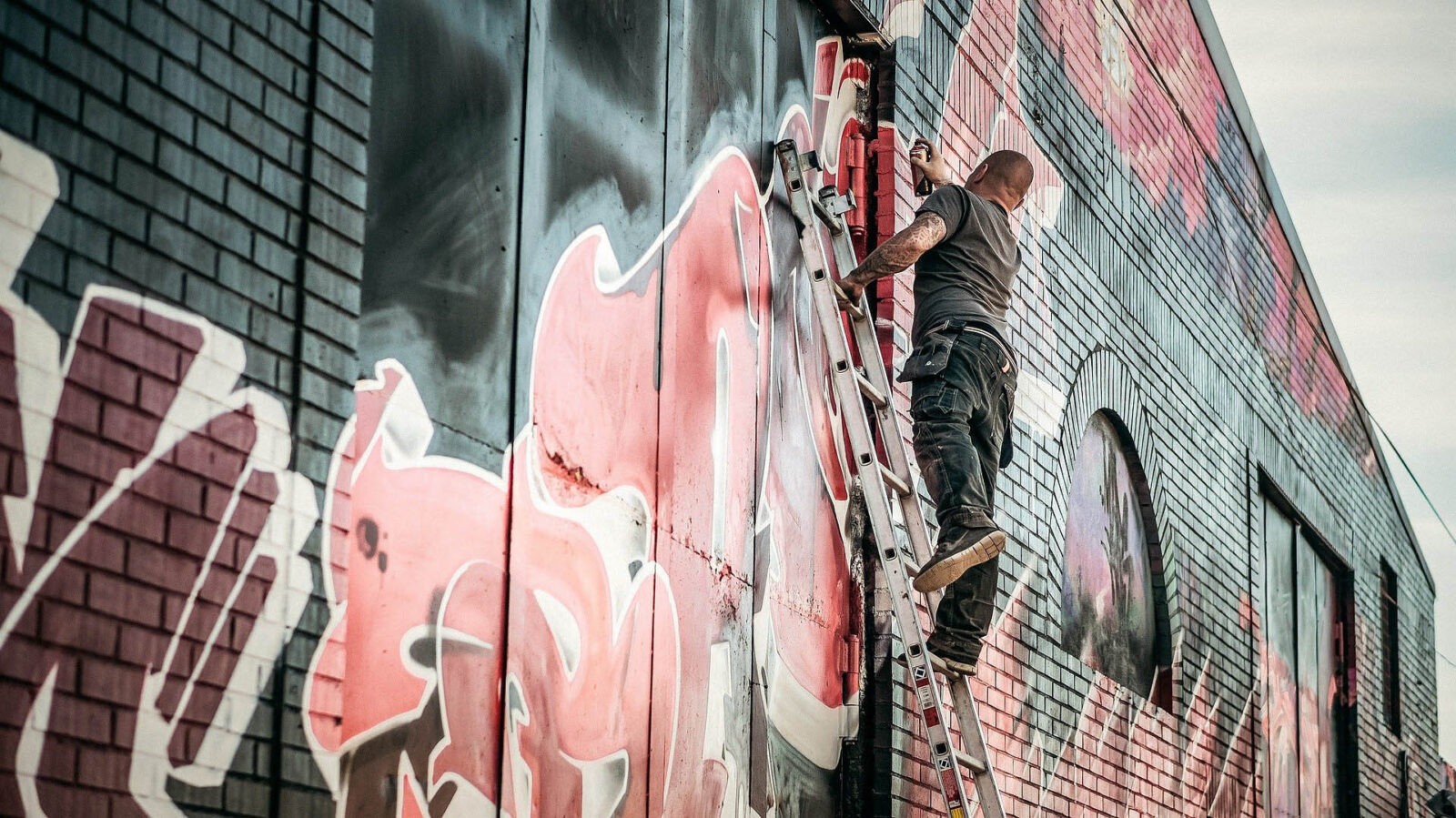Office Design
Often the first place people look when trying to foster adaptability and encourage creativity in the workplace is the physical design of the workplace itself – and with good reason! Poor office design can inhibit even the most creative and adaptable teams, and offices that are designed well can inspire creative thinking and boost productivity.
While each office is going to require a different design approach based on the work performed there and the needs of the employees, there are still several things that anyone looking to maximize the creative potential of their physical workspace should keep in mind. First, you should strive to inspire, but not distract. While video game lounges, ping pong tables, nap nooks, and other trendy design features certainly make it clear that creativity is the focus, they can often lead to more distraction or disuse rather than inspiration. Again, it’s all about what the needs of your office and your employees really are. If a game of ping pong is more likely to dislodge a creative block than it is to simply eat up 20 minutes of time every now and then, don’t let anyone stop you!
For example, while standing desks are shown to promote health and combat things that can inhibit creative thinking like backaches and presenteeism, that doesn’t mean you should run out and convert all of your employees’ desks into standing desks right away. While sit/stand desks are a bit less friendly to the budget, they’re a lot friendlier to the end-user, in this case, your employees, affording them the flexibility to choose when and how long they want to work standing.
Another great way to prime your office for creativity is to brighten it. While you may not be able to make big structural changes to windows, you can, for example, open the blinds, lower dividers, and invest in better lighting. Even adding bias lights to workstations with simple RGBW LED strips, can reduce eye-strain, brighten up the office, and even give employees a chance to express their own creativity or lean into different creative moods.
Of course, changes to the office don’t have to be huge sweeping physical changes; they can be changes in attitude and perception as well. While the sleek, minimal, distraction-free desk with nothing but the necessities on its surface might seem like the way to go, it could also be inhibiting creativity. Encouraging employees to bring in mementos, pictures, desk puzzles, and a plant or two to take care of, will help avoid the environmental monotony that can quickly hamper creativity. Letting employees be responsible for their own workspace also affords them the opportunity to shape their own environment. And you can even provide clear guidelines if you wish, as long as they are given enough room to express themselves and provide themselves with a stimulating working environment.
With that in mind, it’s also worth looking not at just the workstations themselves, but at common areas. Sometimes employees just need a change of scenery, a chance to stretch their legs, have a chat, or work more comfortably for a moment. Creating areas that encourage a bit of social interaction and some new visual stimuli, and which offer a chance to recharge can boost creativity and adaptability whether there’s a ping pong table or not!
You also, crucially, want to be sure that you are providing your team with the resources they need. While greenery, visual stimuli, and effective lighting can go a long way, the potential here may be wasted if employees don’t have the tools they need to experiment, the materials they need to prototype, and the technology they need to communicate their ideas and bring them to life.
Provide Freedom and Flexibility
Providing freedom and flexibility by encouraging employees to personalize their physical environments is one thing, but that spirit of creative freedom should also extend to the work itself. One mistake that a lot of businesses make is getting caught up in how the work gets done, leaving little room for someone to find a better way of doing things. Once you provide employees with freedom and flexibility about that proverbial “how,” you may quickly find that they are capable of coming up with ways to do things that are not only faster, but can actually end up leading to better end results as well! Efficiency and productivity are great bonuses on their own, but creative methods of problem-solving can actually lead to solutions that outdated and rigid methodologies can’t.
It often falls to leaders to communicate the overall mission and vision, and to make sure that the end-solution accomplishes that mission and is in line with that vision, but leaders shouldn’t be spending too much time dictating how to get there. The more room you leave for additional voices, opinions, and creative solutions, the better. This doesn’t mean that managers and team leaders shouldn’t facilitate the movement between project phases, or lead discussions, or anything like that, only that they should try not to inhibit the exploration of different styles, methods, and solutions. The key here is to facilitate progress rather than dictate process.
While standard practices and limits can certainly be put in place for good, well-meaning, reasons, they can also hinder creativity in the workplace. Worse still, most limits that are put on employees are done so unintentionally. While it might seem helpful to provide employees with directions, it’s often much more helpful to simply provide them with direction. Give them the tools they need, the flexibility they need, the freedom they need, and then get out of their way; let them do what they’re here to do.
Encourage Creative Risk-Taking
Even if employees are afforded that utmost freedom and flexibility, no one is going to exercise either if they’re afraid of failure. Employees need to be assured that every experiment doesn’t have to result in perfection. Coming up with creative methods and solutions isn’t always guaranteed to work, but that’s part of the process. Employees need to know that it’s okay to fail, especially if they can take it as an opportunity to learn from their mistakes in order to inform their next attempt – that is, they should be instructed on how to fail wisely.
Failure can be the greatest teacher. Consider how valuable producing a low-resolution prototype to share with the team or show to clients can be. Even if it turns out not to be the direction you want to take things, the insight you gain into why it doesn’t work can help everyone to understand those reasons in a much more tangible way, informing the success of the final product in a way that is often more helpful and effective than if that path were never explored. It also leaves open the possibility for that out-of-the-box solution to be one that works far better than typical solutions. These solutions, after all, are the reward that risks are taken in search of. Employees need not only to be encouraged to speak up when they have out-of-the-box ideas, but they also need to be assured that these radical ideas will be met with an open mind. When creativity and adaptability are at the heart of your business, creative risk-taking can be implied naturally, but that doesn’t mean that managers shouldn’t also proactively encourage the behavior, as well as make sure to be understanding if and when new avenues of exploration lead to dead ends. When one of those new avenues takes your team to a destination that would never have been discovered by treading down the same old paths, it will all be worth it!
Build a Diverse Team and Then Include Everyone
Fostering a creative and adaptable workplace is also about making sure you have the right talent for the job, but often creative teams can end up creatively homogenous. Leaders can tend to hire “in their own image.” Many businesses hire people who think, complete tasks, and solve problems the same way. While it’s certainly good practice to set criteria for new hires and to hire based on how good of a “fit” a potential employee seems to be, relying too much on that mindset can quickly limit the diversity of ideas that enter your workplace. Instead, the hiring process should focus on building a team of different skills and backgrounds, and with complementary strengths.
For example, introversion and creativity tend to correlate positively, and yet teams often hire based on the myth of the “extrovert ideal.” In practice, true value comes from composing a team of a variety of personality types. After all, you logically won’t see all of the benefits of collaboration, brainstorming, specialization, etc., without teams that are composed of different people with different skillsets, different competencies, and different backgrounds. Difference itself should be celebrated and utilized as a powerful tool of discovery leading your team to solutions that any individual may never have arrived at on their own.
But you also need to facilitate these differences. Not just in terms of moderating their debates and guiding their discussions, but in terms of being open to different methods of discussion. When your team is comprised of people whose personalities differ from one another, you may quickly find that the methods which are effective for some, are inhibiting to others.
For example, brainstorming doesn’t have to be all at once. Breaking that process up can help to level the playing field between introverts and extroverts and ensure that no one’s voice is lost. Not everyone is comfortable shouting out the first thing that comes to mind. While this may seem essential to the brainstorming process, the benefits of that methodology can be quickly outweighed by the downside of not hearing from a meaningful portion of your team. Even a simple change like digitizing the process can help more voices to be heard. These differing voices will be necessary to find creative solutions to all of the many different challenges these teams will face together.
Start Rewarding with Awards2Go
Take advantage our low per card fees, flexible load amounts, customized messaging, low cost company-branded design, rush delivery, and more.
Get Visa Cards


